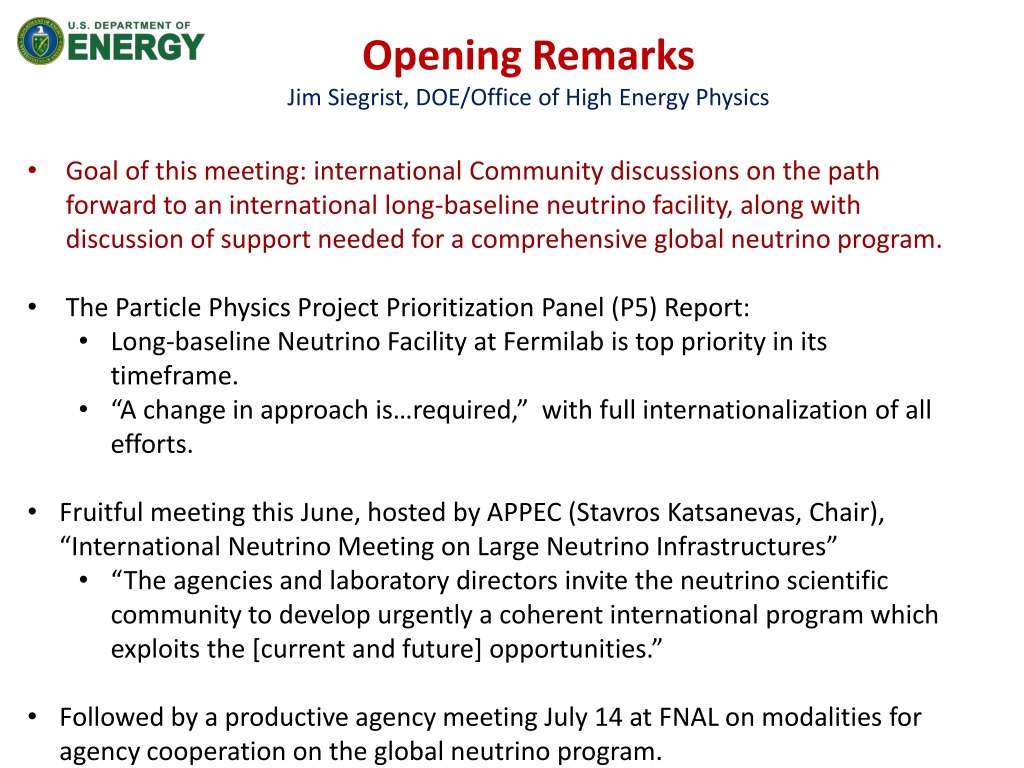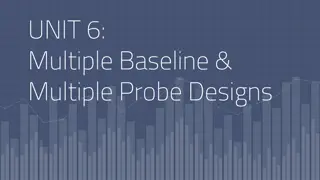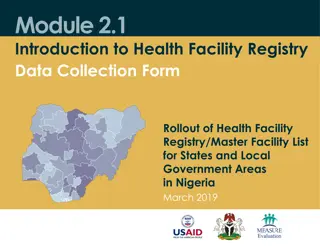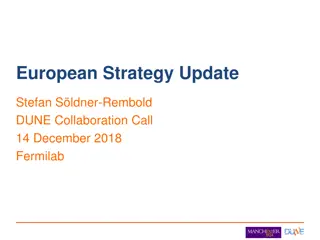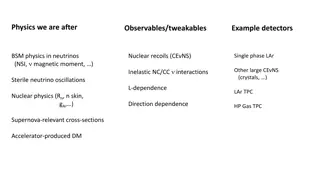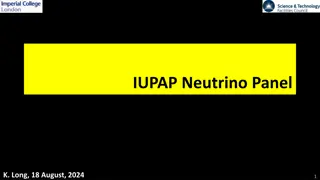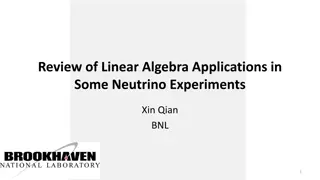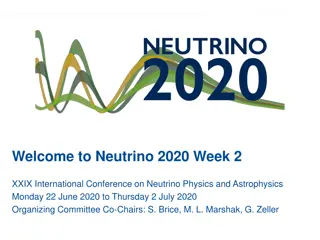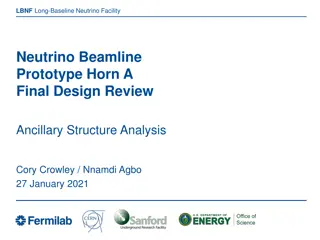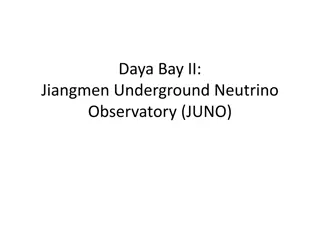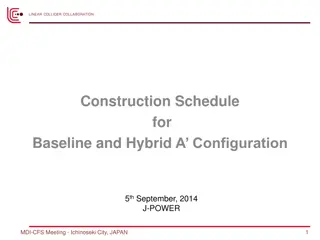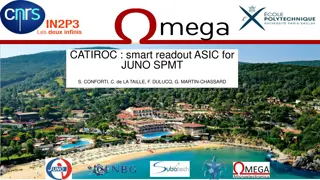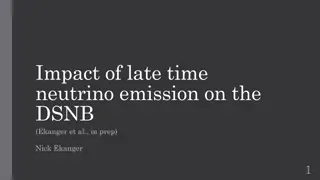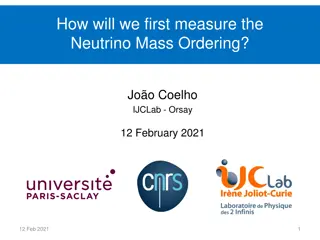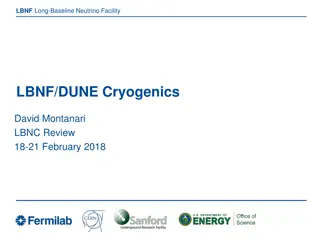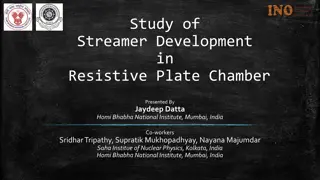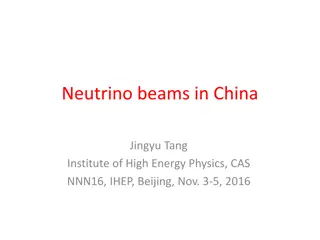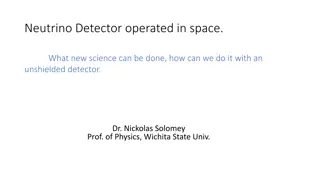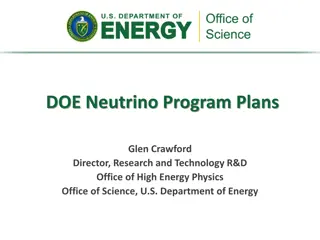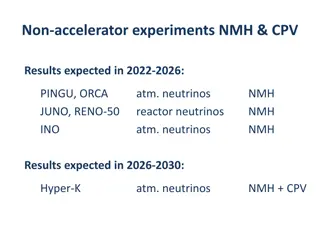International Efforts for Long-Baseline Neutrino Facility
International discussions are underway regarding the establishment of an international long-baseline neutrino facility and the need for comprehensive global support. The P5 report emphasizes the urgency of forming a new international collaboration to design and execute a Long-Baseline Neutrino Facility hosted by the U.S. DOE interprets the recommendations as crucial in advancing neutrino research efforts globally. The community is urged to act promptly to seize the opportunities outlined in the report and secure necessary resources.
Download Presentation

Please find below an Image/Link to download the presentation.
The content on the website is provided AS IS for your information and personal use only. It may not be sold, licensed, or shared on other websites without obtaining consent from the author.If you encounter any issues during the download, it is possible that the publisher has removed the file from their server.
You are allowed to download the files provided on this website for personal or commercial use, subject to the condition that they are used lawfully. All files are the property of their respective owners.
The content on the website is provided AS IS for your information and personal use only. It may not be sold, licensed, or shared on other websites without obtaining consent from the author.
E N D
Presentation Transcript
Opening Remarks Jim Siegrist, DOE/Office of High Energy Physics Goal of this meeting: international Community discussions on the path forward to an international long-baseline neutrino facility, along with discussion of support needed for a comprehensive global neutrino program. The Particle Physics Project Prioritization Panel (P5) Report: Long-baseline Neutrino Facility at Fermilab is top priority in its timeframe. A change in approach is required, with full internationalization of all efforts. Fruitful meeting this June, hosted by APPEC (Stavros Katsanevas, Chair), International Neutrino Meeting on Large Neutrino Infrastructures The agencies and laboratory directors invite the neutrino scientific community to develop urgently a coherent international program which exploits the [current and future] opportunities. Followed by a productive agency meeting July 14 at FNAL on modalities for agency cooperation on the global neutrino program.
P5 Report Recommendation 13: Form a new international collaboration to design and execute a highly capable Long-Baseline Neutrino Facility (LBNF) hosted by the U.S. To proceed, a project plan and identified resources must exist to meet the minimum requirements in the text [of the report]. LBNF is the highest-priority large project in its timeframe. P5 s Minimum Requirements for LBNF: Exposure > 120 kt MW yr by 2035 timeframe Underground far detector expandable to 40 kt LAr fiducial volume 1.2 MW beam power, upgradable Capability to search for SNe bursts, proton decay To address even the minimum requirements the expertise and resources of the international community are needed The activity should be reformulated under the auspices of a new international collaboration, as an internationally coordinated and internationally funded program, with Fermilab as host. There should international participation in defining the program s scope and capabilities. The experiment should be designed, constructed, and operated by the international collaboration.
DOE Interpretation of P5 DOE interprets the P5 recommendations as meaning a comprehensive neutrino program should be supported with FNAL as the host for the keystone long-baseline project in the neutrino research portfolio. Effort should be supported to put the neutrino sector in both theory and experiment on as solid a foundation as the current collider program. This means significant research support will be needed to pursue studies of systematic effects impacting both short and long baseline measurements, possibilities for existence of sterile neutrinos need to be narrowed ( or sterile neutrinos need to be discovered!) and a suite of complementary experiments needs to be pursued globally. P5 advises the US agencies to support the interests of US PIs, including efforts on offshore experiments where science complementary to the domestic program may be available. The agencies will cooperate to collect the resources for long baseline neutrino physics, and will keep one another informed on complementary national efforts in order to achieve a comprehensive neutrino sector understanding efficiently
Why Now? What is the Rush? The world-wide particle physics community is watching carefully to see the response of the neutrino community to the opportunity opened by the P5 report. Decision makers and agency representatives world-wide are prepared to support the Neutrino Community. The P5 report laid out a vision for the science opportunities coming next in the neutrino sector, but did not lay out a detailed plan for how to explore neutrinos. The doorway of opportunity opened by P5 will not stay open long while you debate options. Early convergence by the Neutrino Community on a plan forward will be positively received by the rest of the HEP science community, as well as decision makers world-wide. There is a great deal of work to do to develop a solid, reviewable plan that will stand up to scrutiny from your peers. We are far from where we need to be in order to be sure to collect the financial support needed. Developing and executing the plan needs to be the focus rather than how long it may take to complete the LBNF experiment, which will happen as soon as resources are found there is no preset schedule. In the US, Congressional staff are watching the process closely, and have high expectations that the HEP community will support the P5 plan (2200 signatures can t be wrong ) - the response of the Neutrino Community is a big part of how support will be measured by Congress We ain tgot time to bleed
